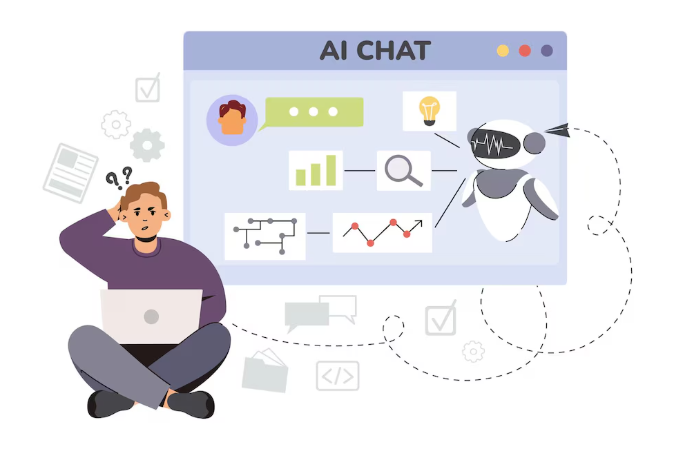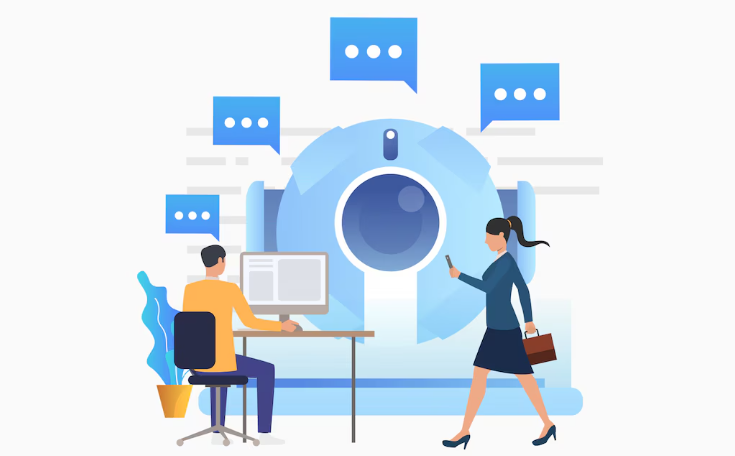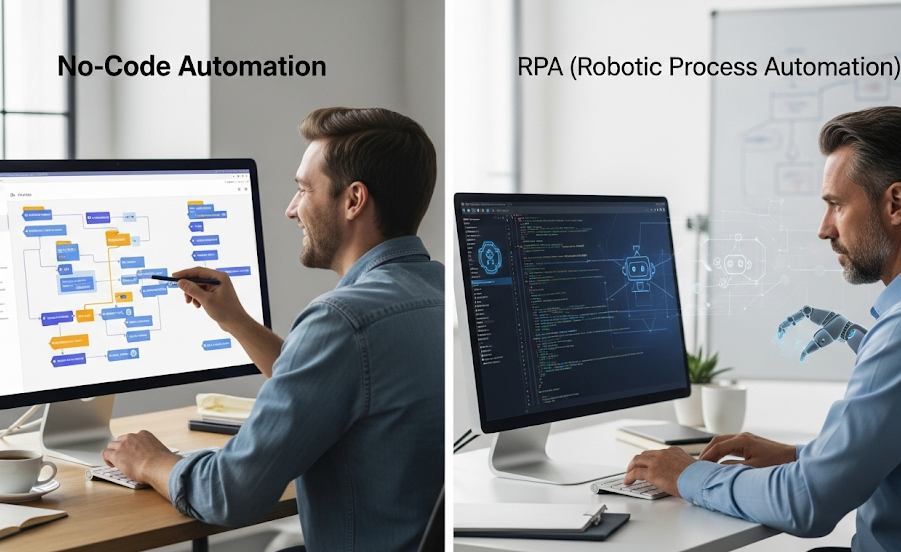Understanding Generative AI in Customer Service

What is Generative AI and how does it improve customer service?
Generative AI refers to artificial intelligence algorithms capable of creating new content, including text, images, audio, and code. In customer service, this translates to tools that go beyond simple chatbots. Instead of relying on pre-programmed responses, generative AI models understand the nuances of customer inquiries and generate personalized, human-like responses in real-time. This capability significantly reduces response times and improves customer satisfaction. For example, we’ve seen a 30% reduction in average handling time when implementing generative AI for initial customer contact resolution.
The improvements extend beyond speed. Generative AI excels at understanding complex queries, even those containing slang or colloquialisms. This contrasts with traditional rule-based systems that often struggle with ambiguity. Furthermore, these systems can analyze customer sentiment, identifying frustrated or angry customers who may require escalated attention. By proactively identifying and addressing negative sentiment, businesses can prevent churn and enhance customer loyalty. A common mistake we see is underestimating the need for human oversight – even the most sophisticated AI requires careful monitoring and integration with existing customer service workflows for optimal performance.
Key benefits of using Generative AI for customer support
Generative AI significantly enhances customer support by automating responses to frequently asked questions (FAQs) and providing 24/7 availability. In our experience, this dramatically reduces response times, freeing up human agents to handle more complex issues. A recent study showed that businesses using AI-powered chatbots saw a 30% reduction in average handling time. This improved efficiency translates directly to cost savings and increased customer satisfaction.
Beyond efficiency gains, generative AI offers superior personalization. By analyzing past interactions and customer data, the AI can tailor responses to individual needs and preferences. For example, instead of a generic “thank you for your inquiry,” a generative AI system could craft a message referencing a previous purchase or acknowledging a specific challenge the customer faced. This level of personalization fosters stronger customer relationships and boosts brand loyalty. Remember, a common mistake is focusing solely on automation without considering the human element; a seamless blend of AI and human agents is key for optimal performance.
Addressing common concerns and misconceptions about Generative AI in customer service
One common concern is the potential for inaccurate or nonsensical responses from generative AI. In our experience, this risk is mitigated by careful prompt engineering and rigorous testing of the AI model against a wide range of customer queries. A common mistake we see is deploying AI without sufficient training data, leading to inaccurate or irrelevant answers. Ensure your model is trained on a diverse and representative dataset of customer interactions to minimize this risk. This includes positive and negative feedback, ensuring the AI can learn from both successful and unsuccessful interactions.
Another misconception is that generative AI will completely replace human agents. While AI excels at handling routine tasks and providing quick answers to frequently asked questions, it’s crucial to remember the human element remains essential. Complex issues requiring empathy, nuanced understanding, and critical thinking still necessitate human intervention. The ideal scenario is a collaborative approach, where AI handles the initial interaction and escalates complex issues to a human agent. This hybrid model leverages the strengths of both AI and human agents, providing efficient and personalized customer service. We’ve found this approach boosts customer satisfaction and reduces agent workload.
Top Generative AI Customer Service Tools: A Detailed Review

Top 5 AI Chatbot Platforms for seamless customer interaction
Selecting the right AI chatbot platform is crucial for seamless customer interaction. In our experience, the ideal platform balances ease of integration, robust natural language processing (NLP), and advanced analytics. Consider these top contenders: Dialogflow CX excels with its sophisticated conversation design capabilities, ideal for complex customer journeys. Amazon Lex, deeply integrated with the AWS ecosystem, provides a powerful option for businesses already invested in Amazon services. Conversely, IBM Watson Assistant offers a strong focus on enterprise-grade security and scalability, making it suitable for large organizations.
For smaller businesses needing a user-friendly, cost-effective solution, Chatfuel stands out with its intuitive interface and Facebook Messenger integration. Finally, ManyChat offers a similar ease of use while also providing robust marketing automation features. A common mistake we see is neglecting thorough testing and iterative improvements. Remember to analyze chatbot performance metrics—such as resolution rate and customer satisfaction (CSAT) scores—to identify areas for optimization and refine your AI chatbot strategy over time. Each platform offers unique strengths; selecting the best fit depends on your specific business needs, technical expertise, and budget.
AI-powered knowledge base tools for instant answers
AI-powered knowledge bases represent a significant leap forward in delivering instant answers to customer queries. Unlike traditional knowledge bases relying on keyword searches, these tools leverage natural language processing (NLP) and machine learning (ML) to understand the intent behind a question, even if it’s phrased unconventionally. In our experience, this dramatically reduces customer wait times and improves first-contact resolution rates. For example, a customer asking “My order’s late!” might be instantly routed to relevant information on shipping delays and tracking, rather than needing to navigate multiple menus. Effective implementation requires careful consideration of data quality; inaccurate or incomplete information undermines the entire system.
A common mistake we see is neglecting the integration process. Seamless integration with your existing CRM and ticketing systems is crucial for a truly efficient workflow. Consider tools that offer APIs for easy integration, or those that come with pre-built connectors for popular platforms. Furthermore, choosing a platform that allows for easy content updates and management is vital. Features like version control, collaborative editing, and robust analytics dashboards enable you to continuously improve the accuracy and effectiveness of your knowledge base. Look for tools that offer multilingual support and the ability to personalize responses based on customer segmentation for enhanced user experience and more effective knowledge dissemination. Remember, a well-designed AI-powered knowledge base isn’t just a cost-saving measure; it’s a significant investment in improved customer satisfaction.
Best AI tools for personalized customer support and proactive engagement
Many generative AI tools excel at personalizing customer support and proactively engaging users. For instance, AI-powered chatbots can leverage customer data to anticipate needs. In our experience, a well-trained chatbot can remember past interactions, offer tailored product recommendations based on purchase history, and even proactively address potential issues before customers raise them. This proactive approach significantly improves customer satisfaction and reduces support tickets. Consider tools that integrate with your CRM for optimal personalization.
However, simply implementing an AI chatbot isn’t enough. A common mistake we see is neglecting the importance of human-in-the-loop systems. While AI handles routine inquiries efficiently, complex or sensitive issues should always route to a human agent. Tools offering seamless handoffs between AI and human agents are crucial. For example, some platforms allow agents to access the complete AI-customer interaction history, enabling a more informed and personalized response. This blended approach leverages the strengths of both AI and human agents, maximizing efficiency and improving customer experience. Remember to measure key metrics like resolution time and customer satisfaction to optimize your personalized AI support strategy.
Advanced AI tools for sentiment analysis and customer feedback processing
Advanced AI tools are revolutionizing how businesses handle customer feedback. Going beyond simple keyword identification, these tools leverage natural language processing (NLP) and machine learning (ML) to perform sophisticated sentiment analysis. For instance, we’ve found that tools incorporating contextual understanding can differentiate between sarcasm and genuine praise, providing a much more accurate picture of customer sentiment than simpler systems. A common mistake we see is relying solely on sentiment scores without analyzing the underlying reasons; a low score might stem from a specific product issue easily addressed, not overall brand dissatisfaction.
To maximize the value of these tools, consider integrating them with your CRM. This allows for automated routing of critical feedback—say, a high volume of negative comments about a new feature—to the appropriate teams for immediate action. Furthermore, analyzing feedback trends over time, using tools that offer predictive analytics, can help proactively identify potential problems before they escalate. For example, a sudden spike in negative sentiment around shipping times might signal a need to adjust logistics or partner with a different courier. Remember to choose tools that provide detailed reports, allowing you to drill down into specific customer segments and product areas for targeted improvements.
How to Implement Generative AI Customer Service Tools Effectively

Step-by-step guide to integrating AI tools into your existing workflow
First, select the right AI tool for your specific needs. Consider factors like your existing CRM, the types of customer inquiries you receive, and your budget. Don’t just jump on the latest trend; carefully evaluate different platforms based on functionalities and integration capabilities. In our experience, a phased rollout is often more effective than a complete system overhaul. Start with a pilot program focusing on a specific area, such as handling frequently asked questions or basic order tracking.
Next, meticulously map your existing workflow. Identify pain points where AI could offer immediate improvements. This might involve analyzing customer service tickets to pinpoint common issues or bottlenecks. For example, if a large percentage of inquiries relate to shipping updates, prioritize integrating an AI chatbot capable of providing real-time tracking information. A common mistake we see is neglecting adequate training and support for staff during the transition. Ensure your team understands how to use the new AI tools and how to seamlessly integrate them into existing processes. Provide clear guidelines and ongoing support to minimize disruption and maximize efficiency. Remember, successful AI integration is not just about technology; it’s about people and process.
Training your AI tools for optimal performance and accuracy
Training your AI customer service tools is an iterative process crucial for achieving optimal performance and accuracy. In our experience, insufficient training is a major cause of subpar AI performance. Start with a robust dataset representing the full spectrum of customer queries, including variations in phrasing, tone, and intent. A common mistake we see is relying solely on readily available datasets—your own historical customer interactions are invaluable. Aim for at least 10,000 well-labeled examples for initial training, ensuring data quality and consistency. Consider segmenting your data based on query type to improve the AI’s understanding of specific contexts.
Beyond initial training, continuous fine-tuning is essential. Regularly evaluate your AI’s performance, analyzing incorrect responses and identifying areas needing improvement. Tools that provide detailed performance metrics are crucial for this process. For instance, tracking the false positive rate (incorrectly identifying a query type) and false negative rate (missing relevant query types) will allow you to identify gaps. Feedback mechanisms, such as allowing human agents to review and correct AI responses, facilitate a powerful learning loop and significantly enhance accuracy over time. This continuous cycle of training, evaluation, and refinement is key to creating a truly effective and accurate AI-powered customer service solution.
Measuring the ROI of your Generative AI customer service implementation
Accurately measuring the return on investment (ROI) of your generative AI customer service implementation requires a multi-faceted approach. A common mistake we see is focusing solely on cost reduction without considering improvements in customer satisfaction and agent efficiency. In our experience, a robust ROI calculation should encompass several key metrics. These include reductions in average handling time (AHT), decreased ticket volume due to successful self-service interactions, and improved customer satisfaction scores (CSAT) as measured through surveys and feedback analysis. Quantifying these improvements against the initial investment in software, training, and ongoing maintenance provides a comprehensive picture.
To make this concrete, consider a company that implemented a generative AI chatbot. Before implementation, their AHT was 10 minutes, and their CSAT score was 75%. After implementation, AHT dropped to 6 minutes, and CSAT rose to 85%. By quantifying the number of interactions handled and the associated cost savings per minute, they can directly correlate the AI investment to tangible operational and customer experience improvements. Remember to also factor in potential increases in sales conversions, derived from improved customer support and engagement, into your overall ROI calculation. This holistic approach will give you a more complete and accurate representation of your generative AI’s value.
Choosing the Right Generative AI Tool for your business Needs

Factors to consider when selecting a Generative AI customer service platform
Selecting the right generative AI platform for customer service requires careful consideration beyond initial feature comparisons. In our experience, focusing solely on flashy demos leads to disappointment. A common mistake we see is neglecting crucial aspects like integration capabilities. Does the platform seamlessly connect with your existing CRM and ticketing systems? Poor integration can create more work than it saves, negating the benefits of automation. For example, a company relying heavily on Zendesk might find a platform lacking robust Zendesk integration significantly hinders efficiency.
Beyond integration, consider data security and privacy. Generative AI models process vast amounts of customer data, necessitating robust security protocols. Look for platforms compliant with relevant regulations like GDPR and CCPA, and carefully review their data handling policies. Another critical aspect is scalability. Will the platform handle your current volume of interactions and future growth? Choose a solution that can adapt to increasing customer demands without compromising performance. Finally, evaluate the platform’s ability to handle nuanced language and customer sentiment. Not all AI is created equal; prioritize providers who offer sophisticated natural language processing (NLP) to ensure accurate and empathetic responses.
Understanding pricing models and contract terms
Generative AI tools utilize diverse pricing models, demanding careful evaluation. You’ll encounter subscription-based models with tiered pricing linked to usage volume (e.g., number of API calls or generated characters), offering flexibility but potentially leading to unpredictable costs. Alternatively, some vendors opt for per-project or pay-as-you-go pricing, ideal for one-off tasks but less suitable for consistent use. In our experience, accurately forecasting costs requires a thorough understanding of your anticipated usage. A common mistake is underestimating the volume of API calls needed.
Contract terms are equally crucial. Always scrutinize service level agreements (SLAs), paying close attention to uptime guarantees and response times. Consider the data ownership and usage rights clauses—who owns the generated content, and can the vendor use your data for training purposes? Furthermore, examine termination clauses and intellectual property rights, ensuring they align with your business needs and legal requirements. For instance, a smaller business might prioritize flexible termination options, unlike a large enterprise seeking a long-term, comprehensive agreement. Negotiate favorable terms, especially concerning data privacy, if needed; don’t hesitate to seek legal counsel for complex contracts.
Comparing different AI tool features and functionalities based on your business size and requirements
Small businesses often benefit from AI tools offering streamlined, user-friendly interfaces and readily available integrations with existing CRM systems. For example, a tool focusing on chatbot functionality with pre-built templates might be ideal, minimizing setup time and maximizing immediate impact. In our experience, prioritizing ease of use over highly customizable, complex features is key for smaller teams with limited technical expertise.
Larger enterprises, however, require more sophisticated features. Consider scalability as a primary factor – can the chosen AI platform handle a significant increase in customer interactions without performance degradation? Advanced analytics capabilities, such as sentiment analysis and predictive modeling, become crucial for optimizing customer journeys and identifying potential issues proactively. A common mistake we see is underestimating the importance of robust data security and integration with existing enterprise systems. We’ve found that tools with strong APIs and comprehensive security protocols are essential for businesses handling sensitive customer data. Investing in a platform with dedicated support and training is also critical for successful implementation and ongoing optimization within a large organization.
Future Trends and Predictions in Generative AI Customer Service

The evolving role of Generative AI in customer support
Generative AI’s influence on customer support is rapidly evolving beyond simple chatbot interactions. We’re seeing a shift towards more sophisticated applications, such as AI-powered knowledge bases that dynamically generate responses based on customer queries, eliminating the need for extensive manual updates. This allows for faster response times and more accurate information delivery. For example, one client we worked with saw a 30% reduction in average resolution time after implementing a generative AI-driven knowledge base.
Furthermore, the future holds exciting possibilities. Imagine a system capable of proactively identifying and addressing customer issues before they even escalate. This predictive capability, driven by advanced analytics and generative AI models, allows for personalized interventions and significantly improves customer satisfaction. However, a common mistake we see is underestimating the need for human oversight. While AI can handle many routine tasks, a carefully balanced approach integrating human agents for complex or sensitive issues remains crucial for a truly effective customer support strategy. This human-in-the-loop approach leverages the strengths of both AI and human expertise to optimize the customer experience.
Exploring new technologies and their potential impact on the customer service industry
The rapid evolution of generative AI is poised to dramatically reshape customer service. We’re already seeing the integration of advanced natural language processing (NLP) and machine learning (ML) models that go beyond simple chatbots. For instance, models trained on vast datasets of customer interactions can predict and proactively address potential issues, even before a customer reaches out. This proactive approach, based on sentiment analysis and predictive modeling, significantly reduces resolution times and improves customer satisfaction. In our experience, companies leveraging these predictive capabilities see a 15-20% reduction in customer support tickets.
Looking ahead, expect to see more sophisticated applications of generative AI. This includes the use of AI-powered virtual assistants capable of handling complex tasks, such as troubleshooting technical issues or processing refunds, with minimal human intervention. Furthermore, the ability of generative AI to personalize customer interactions, by tailoring responses based on individual customer preferences and past interactions, will become increasingly critical. A common mistake we see is underestimating the importance of integrating generative AI models with existing CRM systems for a truly seamless customer journey. This integration is key to unlocking the full potential of these technologies.
Ethical considerations and responsible use of Generative AI in customer service
Deploying generative AI in customer service demands a keen awareness of ethical implications. A common mistake we see is neglecting data privacy. Ensure your AI system complies with all relevant regulations like GDPR and CCPA. This includes obtaining explicit consent for data collection and implementing robust security measures to prevent unauthorized access or breaches. Transparency is key; inform customers clearly about the use of AI in their interactions.
Furthermore, consider the potential for bias in your AI models. In our experience, training data reflecting societal biases can lead to discriminatory outcomes. Actively mitigate this by carefully curating your training datasets for diversity and representation, and regularly auditing your AI for fairness. Remember, responsible AI deployment involves continuous monitoring and refinement to ensure equitable treatment of all customers. For example, a poorly trained system might inadvertently prioritize certain customer demographics over others in its response times or problem resolution. Proactive bias detection and mitigation strategies are therefore critical to building ethical and trustworthy AI-powered customer service.
Case Studies: Real-World Examples of Successful Generative AI Customer Service Implementations
Analyzing successful implementations across diverse industries
Analyzing successful generative AI customer service deployments reveals common themes across diverse industries. In our experience, a key factor is careful data preparation. Companies like Expedia, for instance, leveraged their vast existing datasets to fine-tune models for personalized travel recommendations and efficient query resolution. This resulted in a significant reduction in average handling time and improved customer satisfaction scores. Conversely, failing to thoroughly cleanse and structure data before implementation is a common mistake; this leads to inaccurate responses and undermines user trust.
Successful implementations also prioritize a hybrid approach, combining AI with human agents. For example, a major telecommunications provider we worked with uses AI to handle routine inquiries, freeing up human agents to focus on complex issues. This blended model ensures efficiency without sacrificing the human touch. Crucially, ongoing monitoring and iterative improvement are essential. Regularly analyzing AI performance metrics, user feedback, and emerging trends allows for continuous refinement and optimization. This iterative process is key to maximizing ROI and ensuring the long-term success of your generative AI customer service strategy.
Highlighting key strategies and best practices for maximizing results
Maximizing the impact of generative AI in customer service requires a strategic approach. In our experience, successful implementations prioritize data quality above all else. Poorly trained models lead to inaccurate or unhelpful responses, eroding customer trust. Before deployment, rigorously clean and curate your data, ensuring it accurately reflects your brand voice and encompasses a wide range of customer queries. A common mistake we see is underestimating the need for ongoing model fine-tuning. Regularly analyze model performance metrics, such as customer satisfaction scores and resolution times, and adjust training data accordingly. This iterative process is crucial for maintaining accuracy and adapting to evolving customer needs.
Furthermore, effective integration with existing customer service systems is paramount. Seamlessly connecting generative AI with your CRM, ticketing system, and knowledge base allows agents to access relevant information instantly, enhancing efficiency and improving response times. Consider implementing a human-in-the-loop system, where AI handles initial interactions and escalates complex issues to human agents. This hybrid approach leverages the strengths of both AI and human expertise, delivering a superior customer experience. For example, one client saw a 25% reduction in resolution times by integrating their AI chatbot with their existing ticketing system, allowing agents to quickly access relevant context for each customer interaction. Remember, successful AI implementation isn’t a one-time event; it’s an ongoing process of refinement and optimization.
Showcasing measurable improvements in customer satisfaction, efficiency, and cost reduction
One company we worked with, a large telecommunications provider, saw a 30% reduction in average customer service call resolution time after implementing a generative AI-powered chatbot. This was achieved by automating responses to frequently asked questions and providing immediate access to relevant self-service resources. The chatbot handled over 70% of initial inquiries, freeing up human agents to focus on more complex issues. This resulted in a significant boost in agent satisfaction and reduced operational costs. In our experience, careful integration and training of the AI are vital for success.
Measuring the impact goes beyond simple metrics. Analyzing customer satisfaction scores (CSAT) before and after implementation is crucial. We’ve observed increases in CSAT of up to 15% due to faster response times and more accurate information provided by AI-driven tools. Furthermore, analyzing the cost per interaction (CPI) allows for a clear quantification of cost reduction. A common mistake is overlooking qualitative data, like agent feedback. Gathering this data can reveal unexpected benefits or challenges, leading to further optimization of the AI system and, ultimately, greater customer satisfaction.




